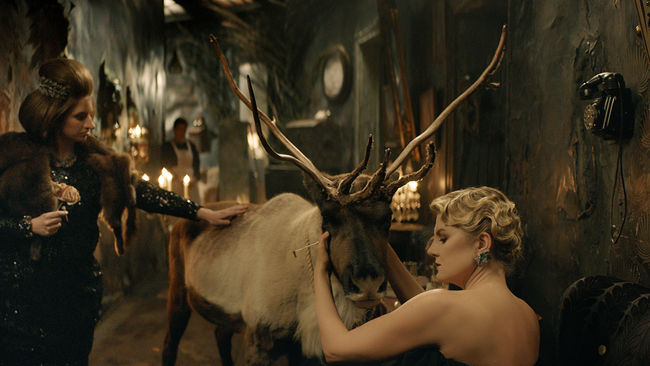Aristocrats
27 January 2021
For each of the features in competition, IFFR asked a critic, writer, academic or programmer to write a short reflection in a personal capacity. The resulting series of ‘Appreciations’ aims to encourage viewers − and filmmakers − at a time when there is no physical festival. Alejandra Armendáriz-Hernández shines a light on Aristocrats.
Boundaries and hierarchies of class and gender intertwine in this urban story of female bonding by Japanese director Sode Yukiko. Following her award-winning debut film, indie production Mime-Mime (2008), and smart romantic drama Good Stripes (2015) − both original scripts by Sode − she writes and directs her third feature: a film adaptation of a novel by Yamauchi Mariko, a writer celebrated for her realistic depictions of women’s experiences living small-town lives.
This time, however, the film is set in an ever-changing Tokyo, socially and geographically segregated by class. Aristocrats portrays two arasa (around 30-year-old) women from different origins and social strata as they get to know each other and construct their lives as independent working women. Gentle Hanako belongs to an upper-class Tokyo family and, in her late 20s, is in desperate search of a suitable husband to marry and start her expected life as a refined wife and mother. From a working-class background, resolute Miki arrived in Tokyo from a provincial city to study at a prestigious university, but family financial problems force her to drop out and find work, first as a hostess and then as an ‘office lady’. The separated worlds and experiences of these two women intersect when Hanako meets and marries Koichiro, an elegant and polite lawyer from a wealthy family of politicians who is also Miki’s lover.
While stories depicting these kinds of romantic triangles often revolve around the male protagonist or the rivalry between women, Aristocrats offers a refreshing take on female relationships that cross the social divide, and goes beyond romance and marriage. Through their few encounters and conversations, Hanako and Miki recognise each other as individuals, trespassing on the invisible borders of Tokyo’s class system. They learn, particularly Hanako, to enact and negotiate their agency as women in contemporary Japan, gaining a little freedom from the social constraints in their lives. Men such as Koichiro, on the other hand, subjects at the centre of power, do not seem to get that opportunity, although the final scene leaves the door open for them also.
Placidly and carefully, Sode characterises her protagonists and their development through subtle dialogues and visually conveyed displays of emotion, avoiding didacticism. The lives of Hanako and Miki are represented by and against background images of Tokyo and its structures of power. Inhabiting spaces of privilege but without real control over them, Hanako moves between fancy restaurants, stylish homes and family gatherings. She often silently observes the sheltered world around her through the windows of taxis, comfortably seated yet lonely and limited, a spectator of her own life. Her experience and vision of Tokyo contrast with the agility of Miki, who moves around on her bike and shows us the grounds and rooftops of a working city, its small apartments and cheap bars. Nevertheless, Tokyo is also a place of opportunities for Miki as a single woman from a small town, depicted briefly as a shallow site of precarity, and far from an idyllic place of rural utopia.
Aristocrats does not present an overly radical depiction of feminist alliance, but offers a calm, nuanced story of female friendship, life changes, and the cracks in the social landscape of contemporary Tokyo.
Alejandra Armendáriz-Hernández is a film researcher on Japanese cinema, gender studies and popular culture in East Asia.
Appreciations
‘Appreciations’ aims to encourage viewers − and filmmakers − at a time when there is no physical festival. Discover more short reflections on the features in competition.



